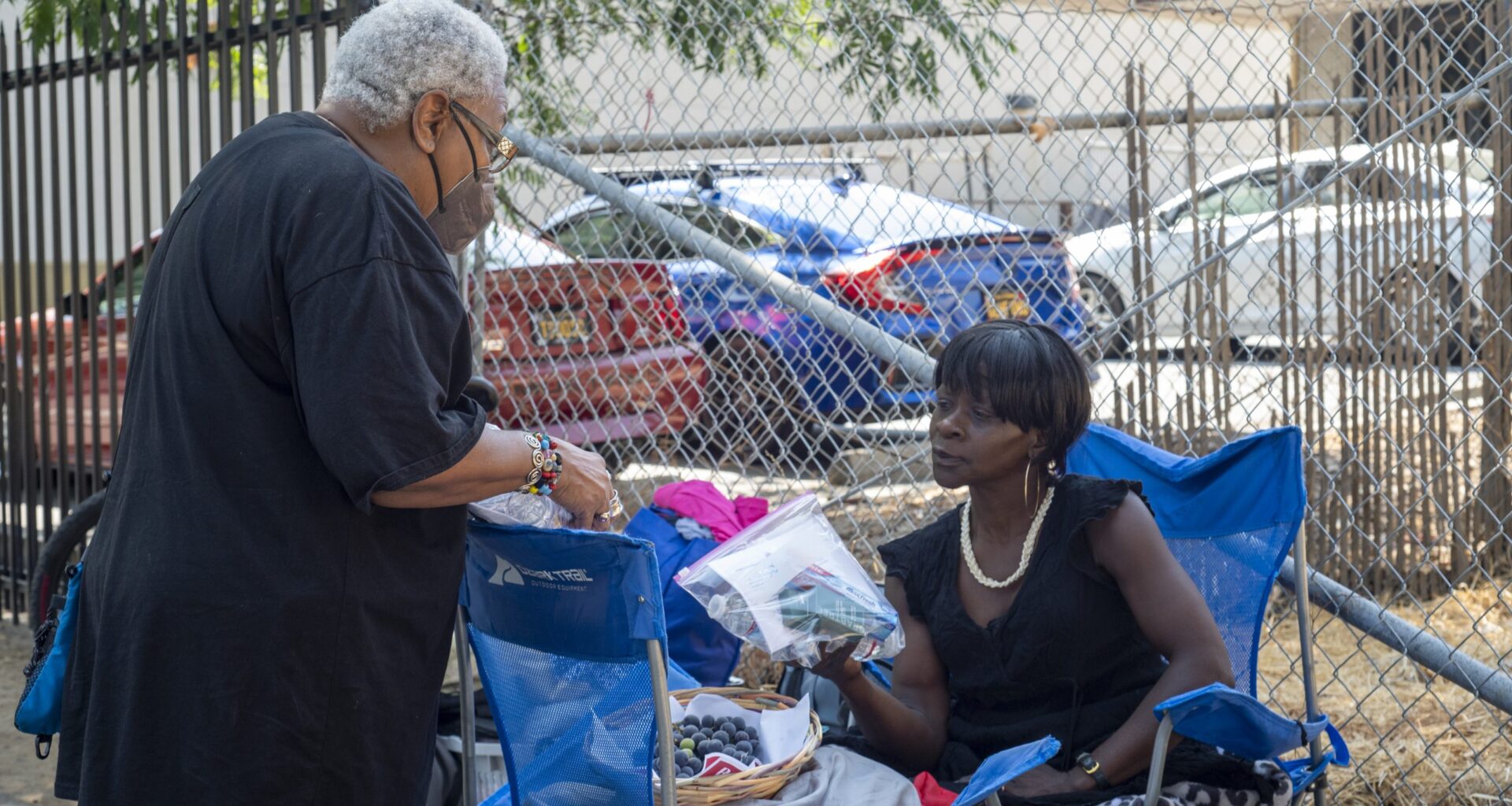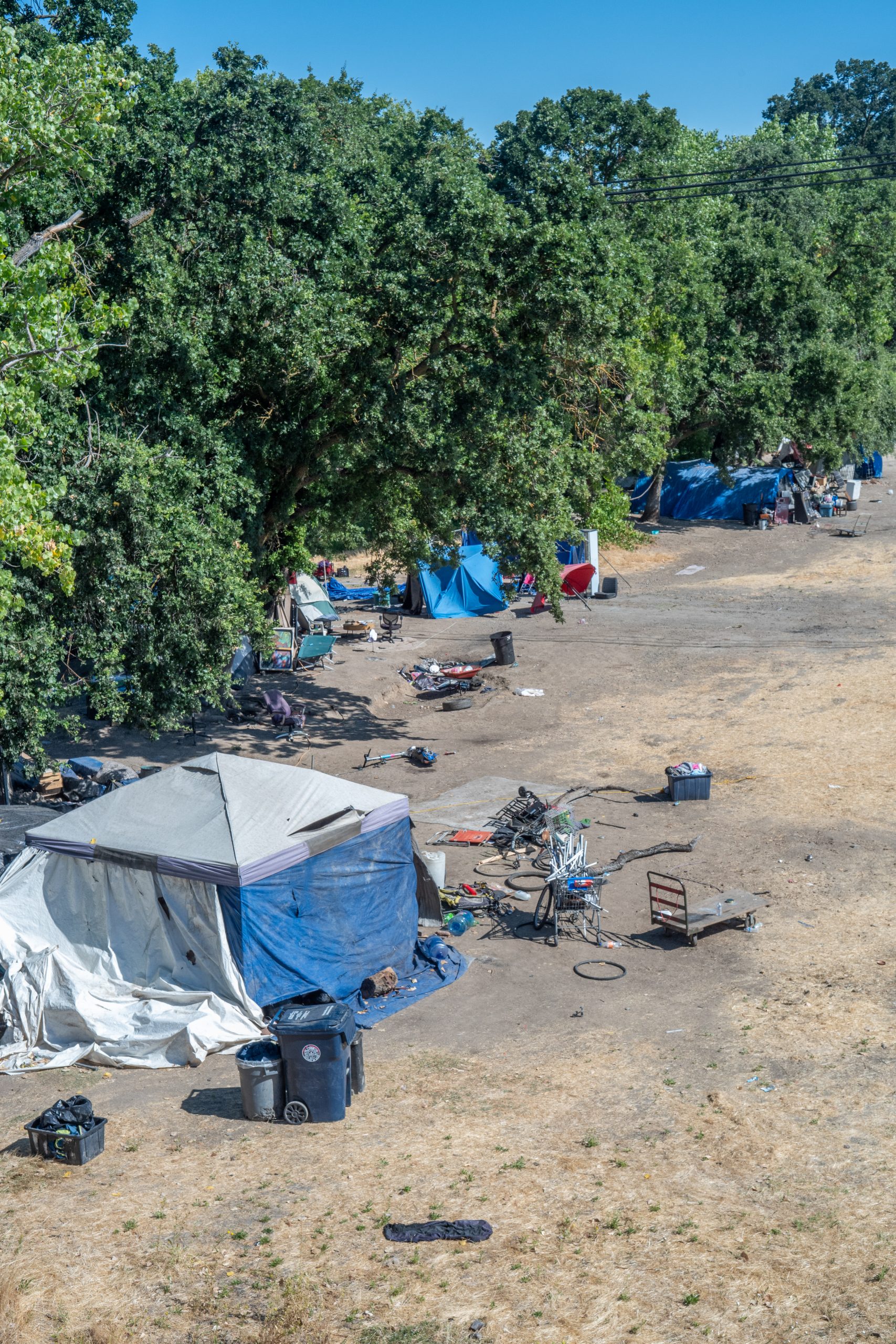
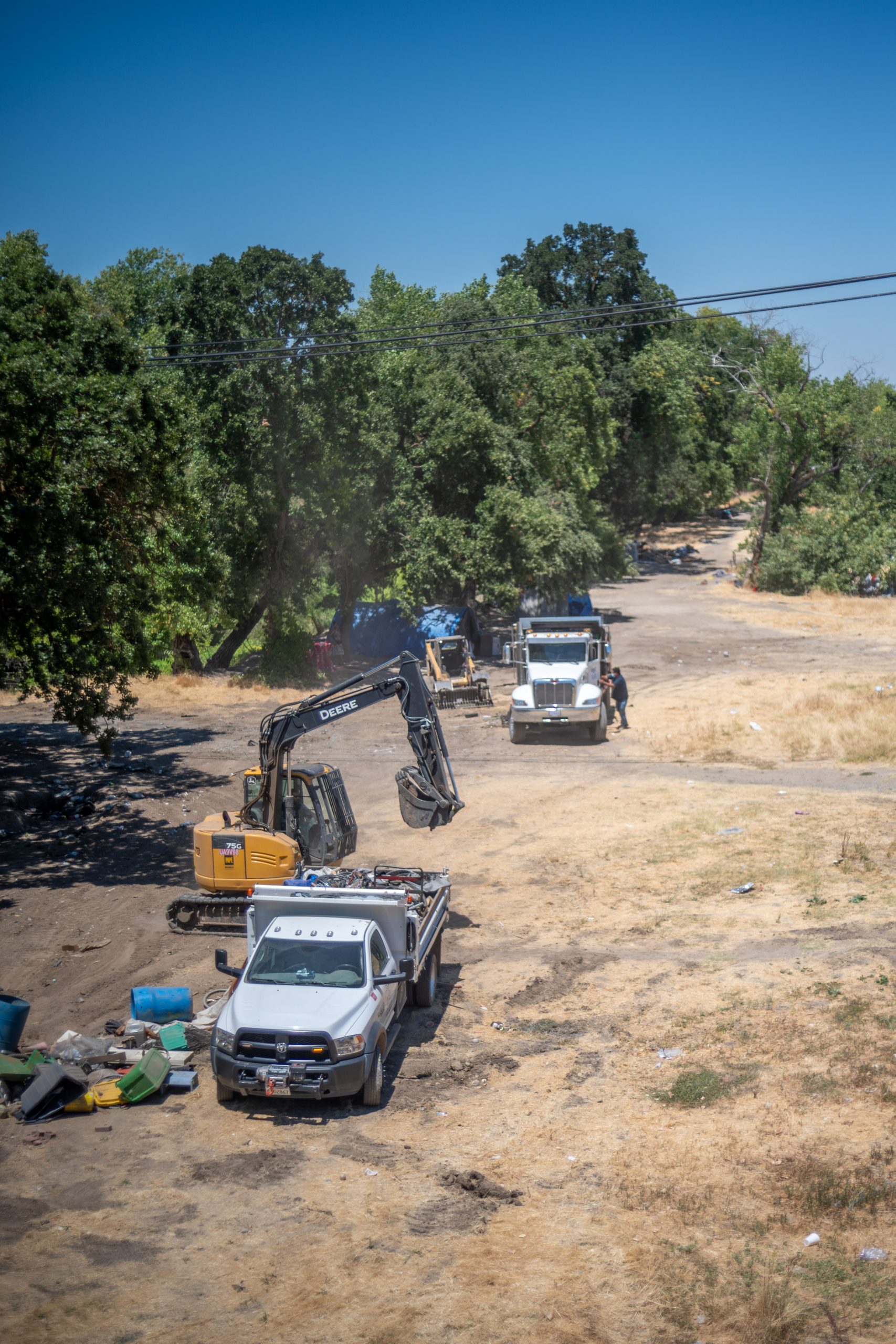 Before and after pictures taken in June, left, and August of part of the encampment that Satearah Murphy lived.
Before and after pictures taken in June, left, and August of part of the encampment that Satearah Murphy lived.
Homelessness By The Numbers
As Sacramento grows, the city struggles to house all its people. Rising average monthly rent often exceeds what residents can pay. Black people are often more susceptible to housing instability.
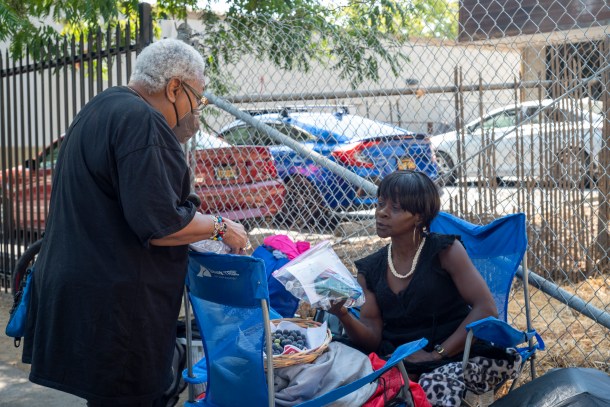 Poor People’s Campaign advocate Faye Wilson Kennedy distributes hygiene supplies to Von, an unhoused person living on X Street.
Poor People’s Campaign advocate Faye Wilson Kennedy distributes hygiene supplies to Von, an unhoused person living on X Street.
SACRAMENTO CITY AND COUNTY CONTINUUM OF CARE 2024 PREPARED BY SACRAMENTO STEPS FORWARD
Black individuals are 3.7 times more likely to experience homelessness than the average Sacramentan, while Asian individuals are 8.2 times less likely.
American Indians and Alaska natives are 5.6 times more likely to experience homelessness.
Some 6,615 people were estimated to be experiencing homelessness during the biennial 2024 Point-in-Time Count, a 28.7% decrease from 2022.
Most unhoused people were white (42%), followed by Black (33%), Hispanic (15%), multiracial (5%), American Indian or Alaska Native (AI/AN, 2%), Asian (2%), Native Hawaiian or Pacific Islander (1%), and Middle Eastern (~0%) individuals.
While the overall population grows, the unhoused rate remains the same. It takes a community working together to make a long-term impact on the housing crisis.
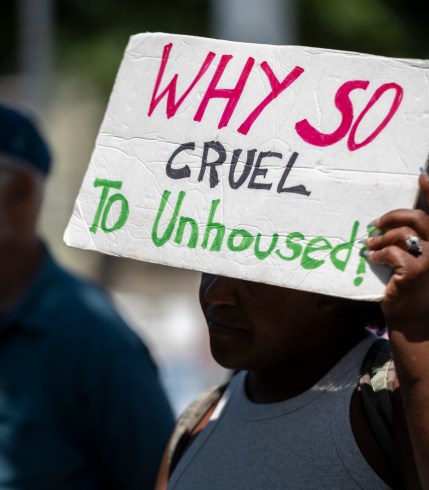 Satearah Murphy holds up a sign during a Moral Monday’s press conference held by the Poor People’s Campaign.
Satearah Murphy holds up a sign during a Moral Monday’s press conference held by the Poor People’s Campaign.
There are folks working daily to help the people impacted by the housing crisis. Poor People’s Campaign organizer Faye Wilson Kennedy provided the below statistics that paint a sobering picture of what she and other advocates and service providers face.
In 2024, Black residents were 35% of Sacramento’s homeless population, despite being only 9% of the county’s total population.
That percentage is four percentage points greater than in the 2022 Point-in-Time Count (31%) and represents a greater overrepresentation compared to the state average of 26% for Black individuals experiencing homelessness.
Black families are also disproportionately represented among the unhoused, with nearly 60% of homeless individuals in households with children being Black.
Black residents are more likely to struggle to afford housing in Sacramento, with 22% reporting they cannot afford their rent or mortgage, compared with 7.2% of all survey respondents.
Black people are overrepresented in Sacramento’s homeless deaths, with 20% of unhoused deaths in 2023 being Black individuals, more than double their proportion in the county’s general population.
The rate of chronic homelessness and individuals with disabilities has doubled since 2019, and Black people are particularly affected by prolonged periods of homelessness.
Many Black individuals and families are on long waiting lists for shelters and housing programs, making access to support difficult.
Support services are being cut nationally. In June, the Poor People’s Campaign led by Kennedy and Rev. Kathy Williams held three “Moral Mondays” outlining the potential impact of cuts.
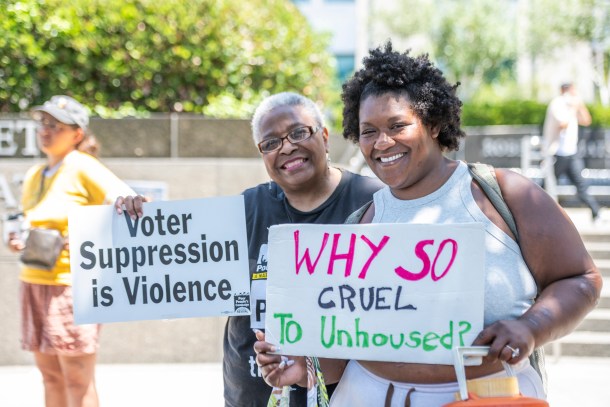 Poor People’s Campaign lead advocate Faye Wilson Kennedy, left, and former Camp Resolution resident Satearah Murphy attend a “Moral Monday” event in June.
Poor People’s Campaign lead advocate Faye Wilson Kennedy, left, and former Camp Resolution resident Satearah Murphy attend a “Moral Monday” event in June.
The insights shared by poet and unhoused advocate Satearah Murphy — herself homeless — resonated: “If we don’t all stand together at some point, nothing is going to get done. It’s going to take every single body, every single person that cares, every single organization, every single church member, every single person, every single body to come together, to stand as one, to make a change, to make a difference. I don’t care where you’re from.”
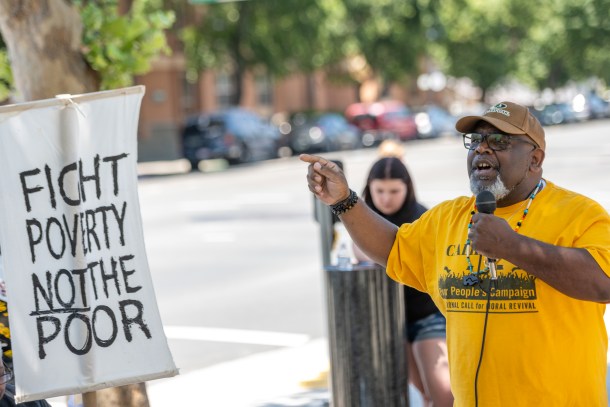 Kevin Carter speaks at the Poor Peopls campaign’s Morale Mondays, in front of the Robert Matsui Federal Courthouse about social services needed to support the community.
Kevin Carter speaks at the Poor Peopls campaign’s Morale Mondays, in front of the Robert Matsui Federal Courthouse about social services needed to support the community.
Speaking at a Moral Monday event June 9 at the Robert Matsui Federal Courthouse, Poor People’s campaign activist Kevin Carter explained why Sacramento has a disproportionate rate of unhoused Black people compared to other racial and ethnic groups:
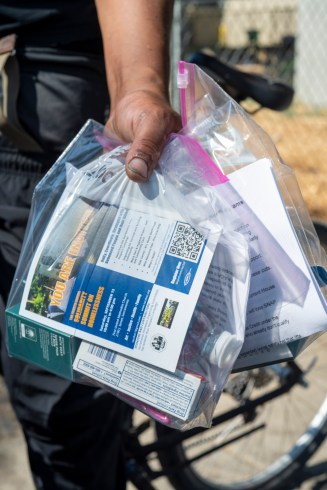 A typical bag of supplies that the Poor People’s campaign gives out to unhoused people.
A typical bag of supplies that the Poor People’s campaign gives out to unhoused people.
This blog series was produced as a project for the USC Annenberg Center for Health Journalism’s 2025 California Health Equity Fellowship.
Related

